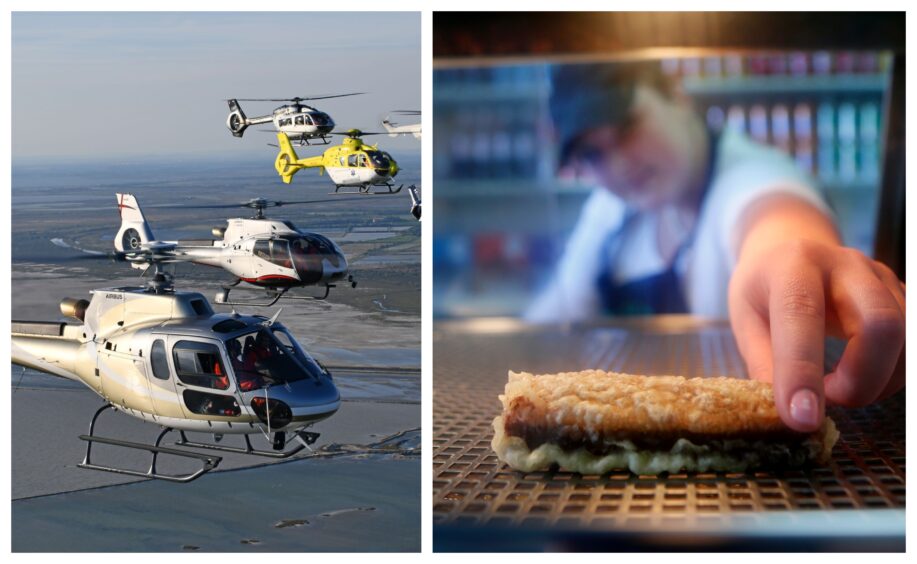
A fuel derived from “chip fat” could be the near-term answer for offshore helicopters to cut emissions, according to an aviation expert.
“It turns out the deep-fried mars bar can save the planet”, was the tongue-in-cheek comment from Andy Evans, director of Aberdeen-based consultancy Aerossurance, at an Oil and Gas UK event on Wednesday.
Mr Evans was highlighting sustainable aviation fuel (SAF) as “the most available and technically fesible” option in the short term for the sector, including offshore helicopters, to reduce emissions; a challenge being looked at closely as COP26 comes up in Glasgow in November.
He explained: “This is refined from sustainable feedstock. What is sustainable feedstock I hear you ask? Well, chip fat, among other things.
“There are many other possible feedstocks but, effectively, it’s all about distilling, refining JET-A1 from non carbon-based feedstock.”
The biofuel can cut emissions by up to 80%, according to estimates from the International Air Transport Association and BP, while helicopter manufacturer Airbus has set up a dedicated user group to “pave the way toward 100% SAF flights for future fleets”.
Mr Evans said: “The problem with SAF at the moment is simply it is very, very expensive. Jet A-1 SAF will become far more economic as airlines pick up and demand SAF.
“As an industry, the offshore helicopter industry is not going to shift those economics very easily, but it is, as it becomes available, a highly technical feasible option.”
He also discussed the potential of other fuels, such as green and blue hydrogen, in the sector which could open up a “whole series of alternative propulsion options”.
At large-scale, this isn’t expected to happen until the 2030s, after commuter vehicles adopt it.
But he expects Scotland to have a role to play in bringing it to the aviation market.
“One example of a really neat early adoption possibility is if you look at the shuttle operations between Aberdeen and Sumburgh”, he said.
“There you’ve got a regular commuter regional service between two simple, straightforward hubs in terms of implementing the refuelling infrastructure, both of which have very attractive hydrogen options nearby. Both blue hydrogen, which is industrially prodced hydrogen coupled with CCS, and green hydrogen which is produced through renewable energy and electrolysis.
“There is an opportunity for Scotland to maybe take a lead in some of the early introduction, trial and development of hydrogen implementation.”

